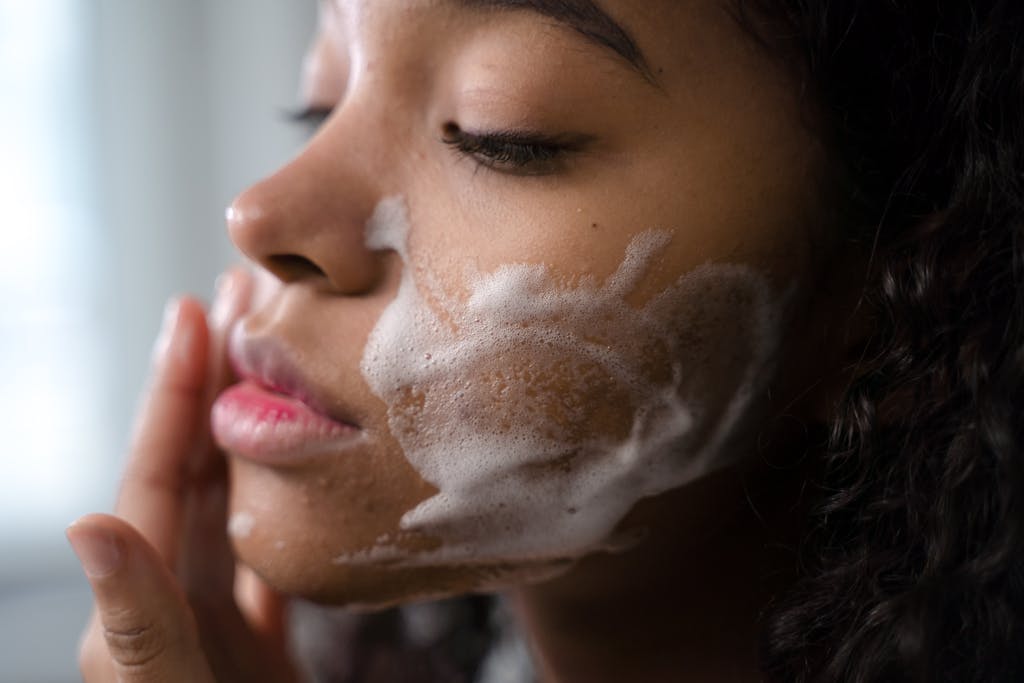Sun-Kissed and Safe: Embracing Natural Sun Protection Methods
The sun’s warmth can be invigorating, but it’s ultraviolet (UV) rays pose significant risks to our skin. While sunscreen is essential for protecting yourself from harmful sun exposure, navigating the world of sunscreens can be confusing. Concerns about harsh chemicals and the impact on the environment have many people seeking natural alternatives. This blog post delves into the world of mineral-based sunscreens and explores natural sun protection options using natural ingredients like zinc oxide and raspberry seed oil.
Why Sun Protection Matters
The sun emits a spectrum of light, including visible light and invisible ultraviolet (UV) radiation. UV rays damage the skin’s DNA, accelerating aging, increasing the risk of sunburn and premature wrinkling, and even contributing to skin cancer. Consistent sun protection is crucial for maintaining healthy skin throughout your life.
Unveiling the Mineral Difference
Traditional, chemical sunscreens work by absorbing UV rays and converting them into heat, which is then released from the skin. Mineral sunscreens, on the other hand, utilize natural minerals like zinc oxide and titanium dioxide to sit on the skin’s surface and physically block UV rays from penetrating. This makes them a popular choice for individuals with sensitive skin or those concerned about the potential health and environmental effects of chemical sunscreens.
Benefits of Mineral Sunscreens:
-
Gentle on the skin: Mineral sunscreens are generally hypoallergenic and less likely to cause irritation, making them suitable for sensitive skin and even babies.
-
Broad-spectrum protection: Effective mineral sunscreens offer broad-spectrum protection, blocking both UVA and UVB rays.
-
Photostable: Mineral sunscreens offer consistent protection throughout sun exposure, unlike some chemical sunscreens that degrade over time.
-
Reef-safe: Many mineral sunscreens are considered reef-safe, meaning they are less likely to harm coral reefs, a growing environmental concern.
Things to Consider with Mineral Sunscreens:
-
Thickness and visibility: Mineral sunscreens can feel thicker and leave a white cast on the skin, especially compared to chemical sunscreens. However, formulations have improved significantly, offering lighter textures and sheer finishes.
-
Reapplication: As with all sunscreens, reapply mineral sunscreens every two hours, especially after swimming or sweating.
Exploring DIY Sun Protection Options
While commercially available mineral sunscreens offer a convenient and reliable solution, some individuals prefer to explore DIY options using natural ingredients. It’s important to remember that DIY sun protection should not replace commercially available sunscreens, especially for extended sun exposure or for individuals with high-risk skin types. However, DIY options can offer additional protection when used in conjunction with commercially available sunscreens or for minimal sun exposure.
Here are some natural ingredients with inherent sun protection properties:
-
Zinc Oxide: This is the most common mineral sunscreen ingredient, offering broad-spectrum protection and being gentle on the skin. It is essential to use non-nano zinc oxide, as nanoparticles may raise safety concerns.
-
Raspberry Seed Oil: This oil boasts a natural SPF of 28-50, making it a valuable addition to DIY sunscreens. It also offers antioxidant benefits for the skin.
-
Coconut Oil: While not as potent as other options, coconut oil offers a natural SPF of 4-10 and can be used for limited sun exposure or to boost hydration in DIY sunscreens.
-
Carrot Seed Oil: This oil has a natural SPF of 15 and is rich in antioxidants, but further research is needed to determine its effectiveness in sun protection.
Important Note: It is crucial to understand that these natural ingredients offer varying degrees of sun protection, and their effectiveness can be limited and influenced by factors like application amount and skin type. Always consult a dermatologist before relying solely on DIY sun protection options.
Creating Your DIY Sunscreen Blend
Disclaimer: The following information is for educational purposes only and should not be taken as medical advice. Always consult a healthcare professional before attempting any DIY remedies or using essential oils.
Here’s a basic recipe for a DIY mineral sunscreen lotion:
Ingredients:
-
2 tablespoons non-nano zinc oxide powder
-
1/4 cup organic shea butter (melted)
-
1/4 cup carrier oil (like jojoba, coconut, or almond oil)
-
1 teaspoon beeswax (melted)
-
Optional: 2-3 drops of a safe essential oil (like lavender or tea tree oil) for scent
Instructions:
-
In a double boiler or heat-resistant bowl set over simmering water, melt the shea butter and beeswax.
-
Remove from heat and whisk in the carrier oil until well combined.
-
Gradually add the zinc oxide powder, whisking continuously to avoid lumps.
-
If desired, stir in essential oil.
-
Pour the mixture into a clean, airtight container and let it cool completely before use.
Using Your DIY Sunscreen Safely and Effectively
Important Reminders:
-
Limited protection: Remember, DIY sunscreens offer limited protection compared to commercially available sunscreens, especially those with high SPF ratings. They are not suitable for extended sun exposure or for individuals with high-risk skin types.
-
Patch test: Before applying any DIY sunscreen to your face or larger areas of your body, conduct a patch test on a small area of your inner arm. Apply a small amount and wait 24 hours to check for any irritation. If you experience redness, itching, or burning, discontinue use and consult a dermatologist.
-
Reapplication is crucial: Even with limited protection, reapply your DIY sunscreen every 1-2 hours, especially after swimming or sweating.
-
Seek shade and protective clothing: Sun protection goes beyond sunscreen. Seek shade during peak sun hours (10 am – 4 pm) and wear protective clothing, such as hats, sunglasses, and long sleeves, whenever possible.
Additional Tips for Natural Sun Protection
-
Embrace sun-protective clothing: Look for clothing with a UPF (Ultraviolet Protection Factor) rating. A UPF of 50 blocks 98% of the sun’s UV rays.
-
Seek shade whenever possible: Avoid direct sunlight during peak sun hours (10 am – 4 pm). Enjoy outdoor activities in the shade or early morning/evening hours when the sun’s intensity is lower.
-
Consider sun-protective hats and sunglasses: Wide-brimmed hats and sunglasses that block UVA and UVB rays offer additional protection for your head, face, and eyes.
-
Maintain a healthy diet: A diet rich in fruits, vegetables, and antioxidants can help protect the skin from sun damage.
-
Consult your dermatologist: Regularly consult your dermatologist for personalized advice on sun protection and skin health, especially if you have any concerns about your skin or risk factors for skin cancer.
Conclusion
Sun protection is essential for maintaining healthy skin throughout your life. While commercially available mineral sunscreens offer a reliable and convenient solution, exploring natural alternatives can be appealing to some individuals.
Remember, DIY sun protection should not replace commercially available sunscreens, especially for high-risk situations. If you choose to explore DIY options, prioritize safety by using well-researched ingredients, conducting patch tests, and understanding the limitations of their protection. Always prioritize seeking shade, wearing protective clothing, and consulting your dermatologist for comprehensive sun protection guidance.
By embracing a combination of sun-safe practices and responsible sunscreen use, you can enjoy the outdoors while safeguarding your skin’s health and beauty.
Call to Action:
Join us on our blog to uncover the secrets of natural sun protection! Subscribe now to stay informed about the latest trends in mineral-based sunscreens, learn about the benefits of ingredients like zinc oxide and raspberry seed oil, and discover eco-friendly alternatives to traditional sun protection products. Let’s embark on a journey towards healthier skin and a safer environment together. Don’t miss out on valuable insights and tips – subscribe today and embrace the beauty of natural sun care!
FAQ: Sun Protection Naturally
What are the benefits of using mineral sunscreens?
Mineral sunscreens offer several benefits, including:
-
Gentleness on the skin: They are generally hypoallergenic and less likely to cause irritation, making them suitable for sensitive skin. [Source: Skin Cancer Foundation, https://www.cancer.org/cancer/risk-prevention/sun-and-uv.html]
-
Broad-spectrum protection: Effective mineral sunscreens block both UVA and UVB rays. [Source: Environmental Working Group, https://www.ewg.org/sunscreen/]
-
Photostability: They offer consistent protection throughout sun exposure, unlike some chemical sunscreens that degrade over time. [Source: National Cancer Institute, https://www.cancer.gov/types/skin/2012-skin-cancer-aa.pdf]
-
Reef-safe: Many mineral sunscreens are considered reef-safe, meaning they are less likely to harm coral reefs. [Source: The Ocean Foundation, https://inlandoceancoalition.org/sunscreen/]
What are some natural ingredients with sun protection properties?
While not a substitute for sunscreen, some natural ingredients offer varying degrees of sun protection:
-
Zinc oxide: This mineral offers broad-spectrum protection and is gentle on the skin. Use non-nano zinc oxide. [Source: Environmental Working Group, https://www.ewg.org/sunscreen/]
-
Raspberry seed oil: This oil has a natural SPF of 28-50 and antioxidant benefits. [Source: National Institutes of Health, https://www.ncbi.nlm.nih.gov/pmc/articles/PMC8151122/]
-
Coconut oil: This oil offers a natural SPF of 4-10 but limited effectiveness. [Source: National Institutes of Health, https://pubmed.ncbi.nlm.nih.gov/30395784/]
-
Carrot seed oil: This oil has a natural SPF of 15 and is rich in antioxidants, but more research is needed. [Source: Pubmed Central, https://pubmed.ncbi.nlm.nih.gov/33721242/]
Can I rely solely on DIY sun protection?
No. DIY sunscreens offer limited protection compared to commercially available sunscreens, especially those with high SPF ratings. They are not suitable for extended sun exposure or for individuals with high-risk skin types. Always consult a healthcare professional before using DIY sun protection.
What are some additional tips for natural sun protection?
-
Sun-protective clothing: Look for UPF-rated clothing. [Source: American Academy of Dermatology, https://www.aad.org/public/everyday-care/sun-protection/shade-clothing-sunscreen]
-
Seek shade: Avoid direct sunlight during peak sun hours (10 am – 4 pm).
-
Sun-protective hats and sunglasses: Choose wide-brimmed hats and sunglasses that block UVA and UVB rays.
-
Healthy diet: Consume fruits, vegetables, and antioxidants to support skin health.
-
Consult your dermatologist: Seek regular skin checks and personalized sun protection advice.
Remember: Sun protection is crucial for healthy skin. While exploring natural alternatives can be interesting, prioritize safety and consult your dermatologist for comprehensive guidance.










